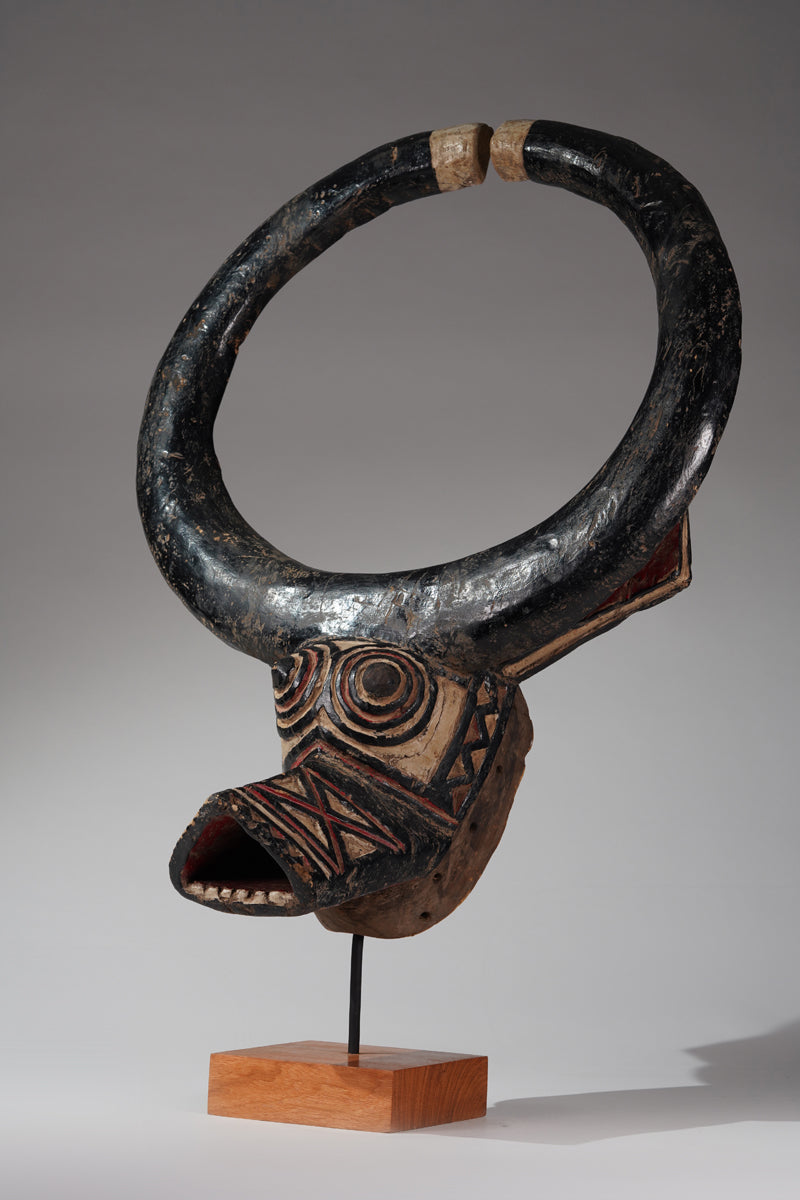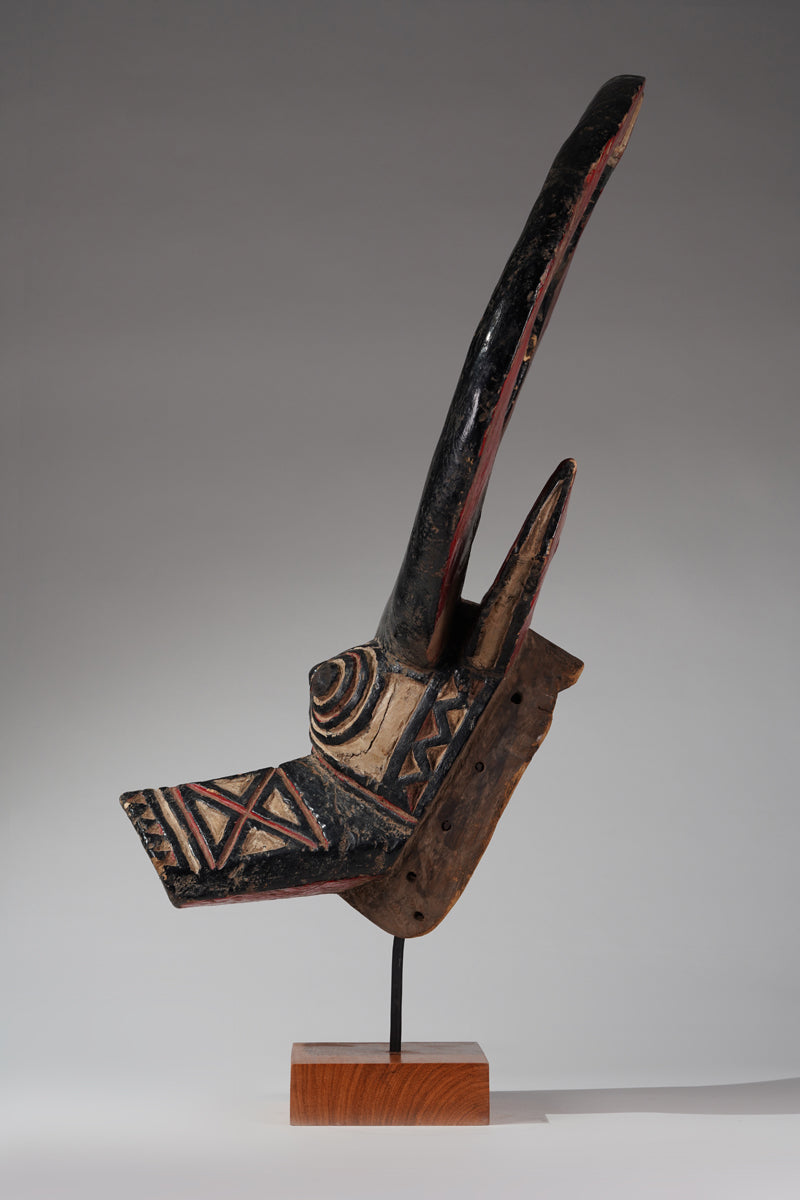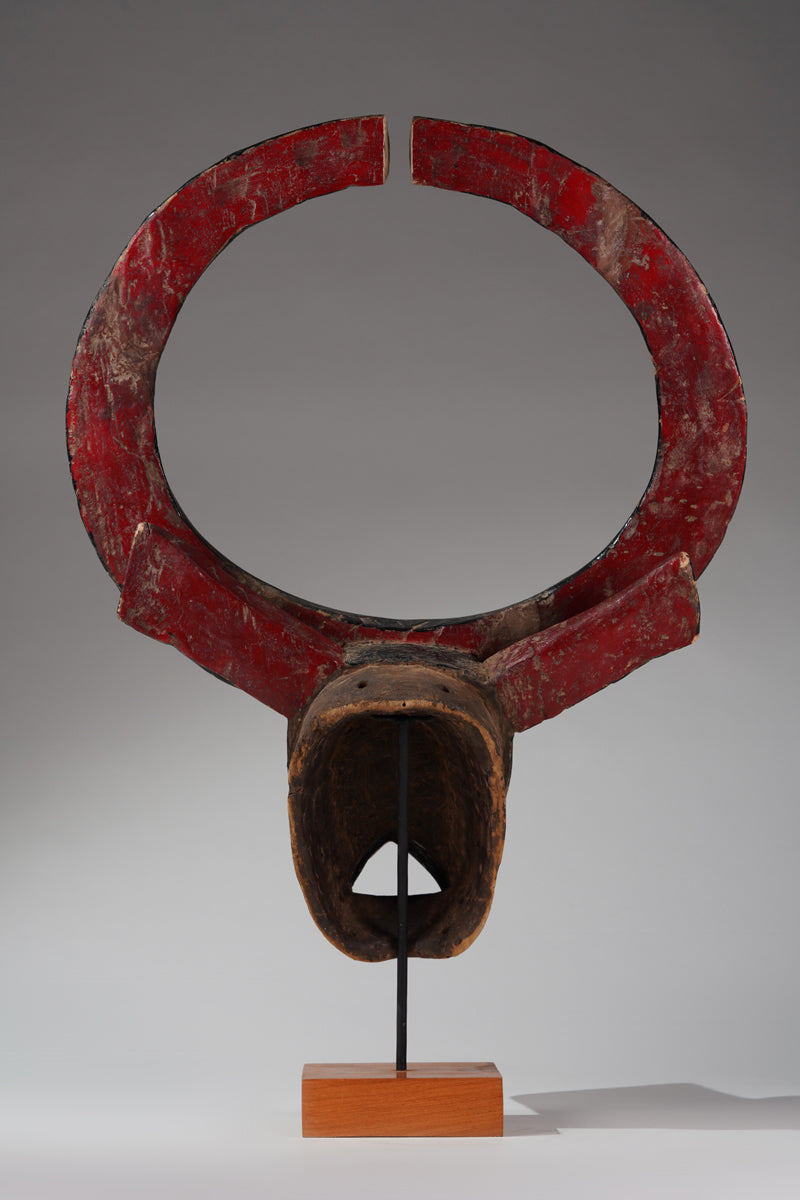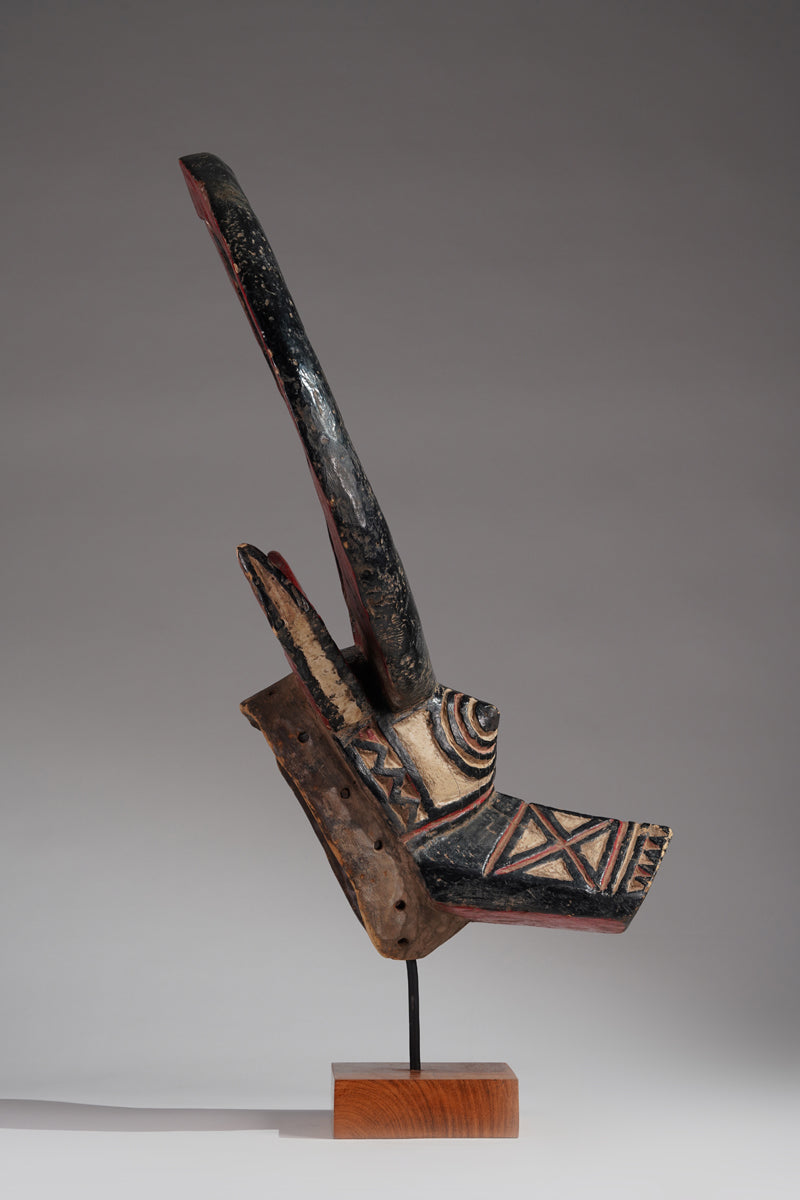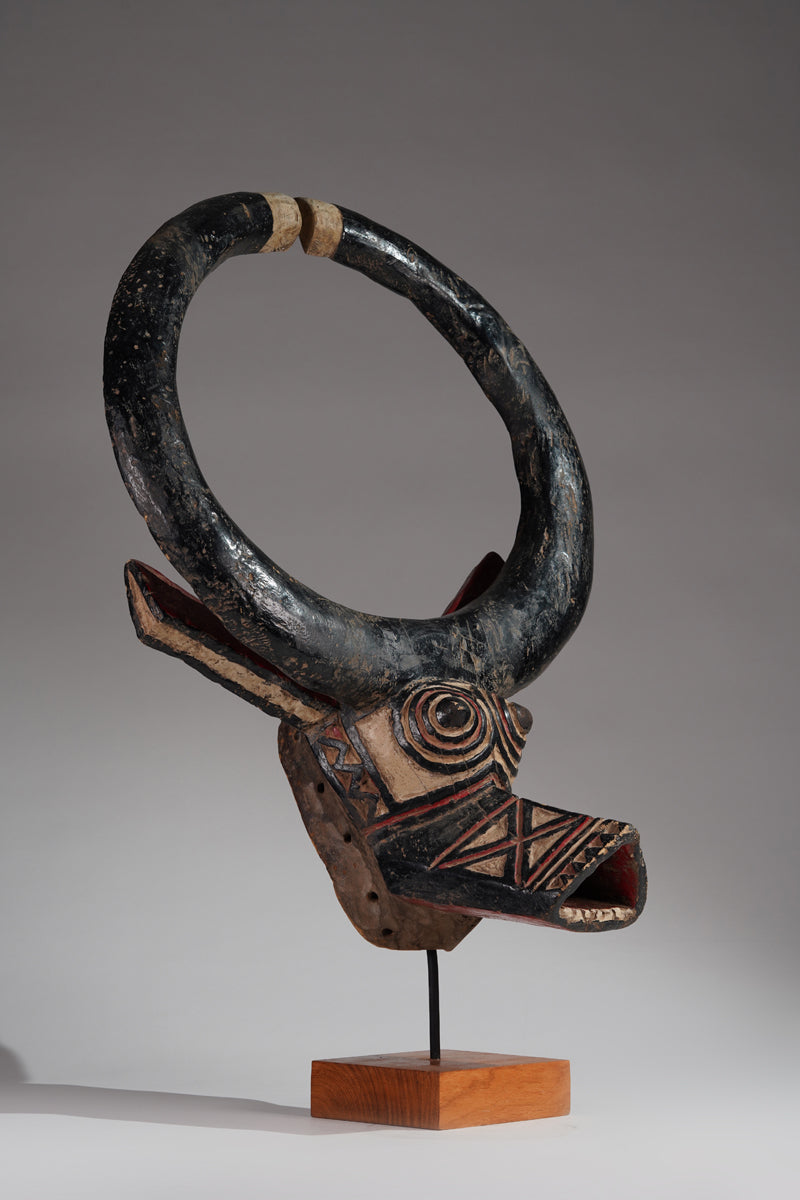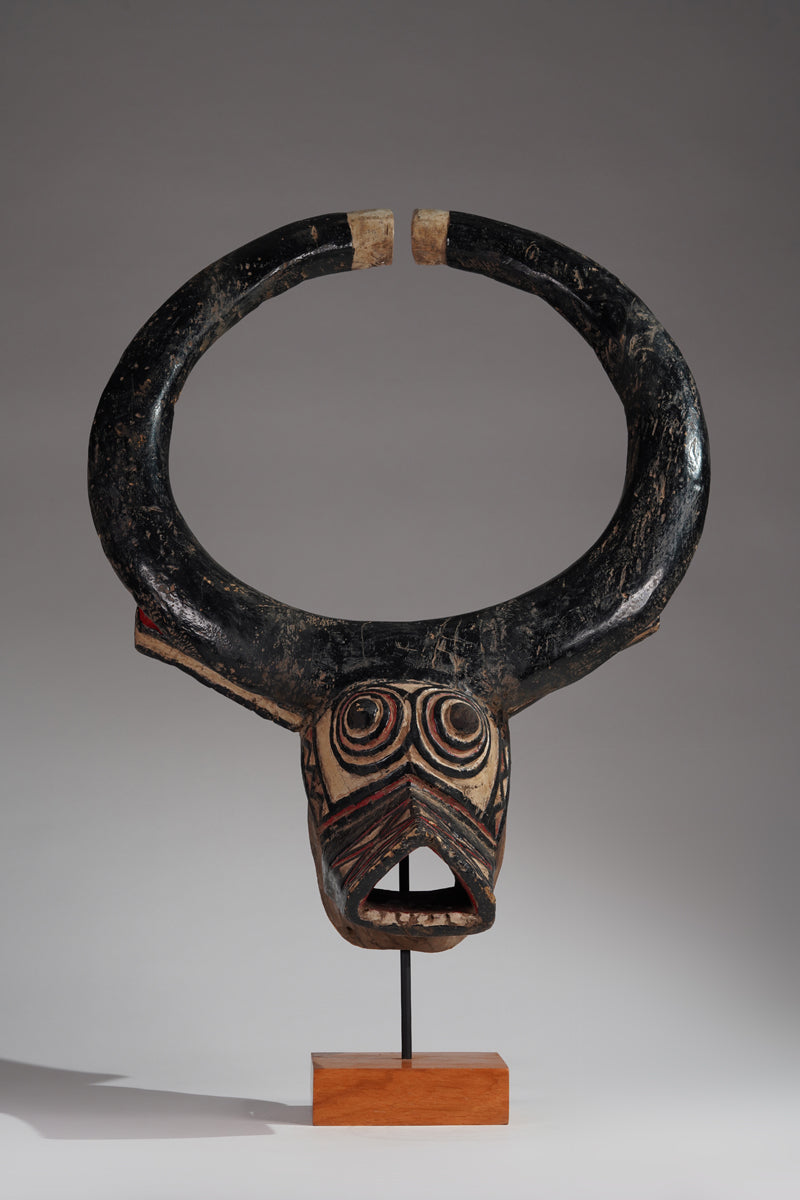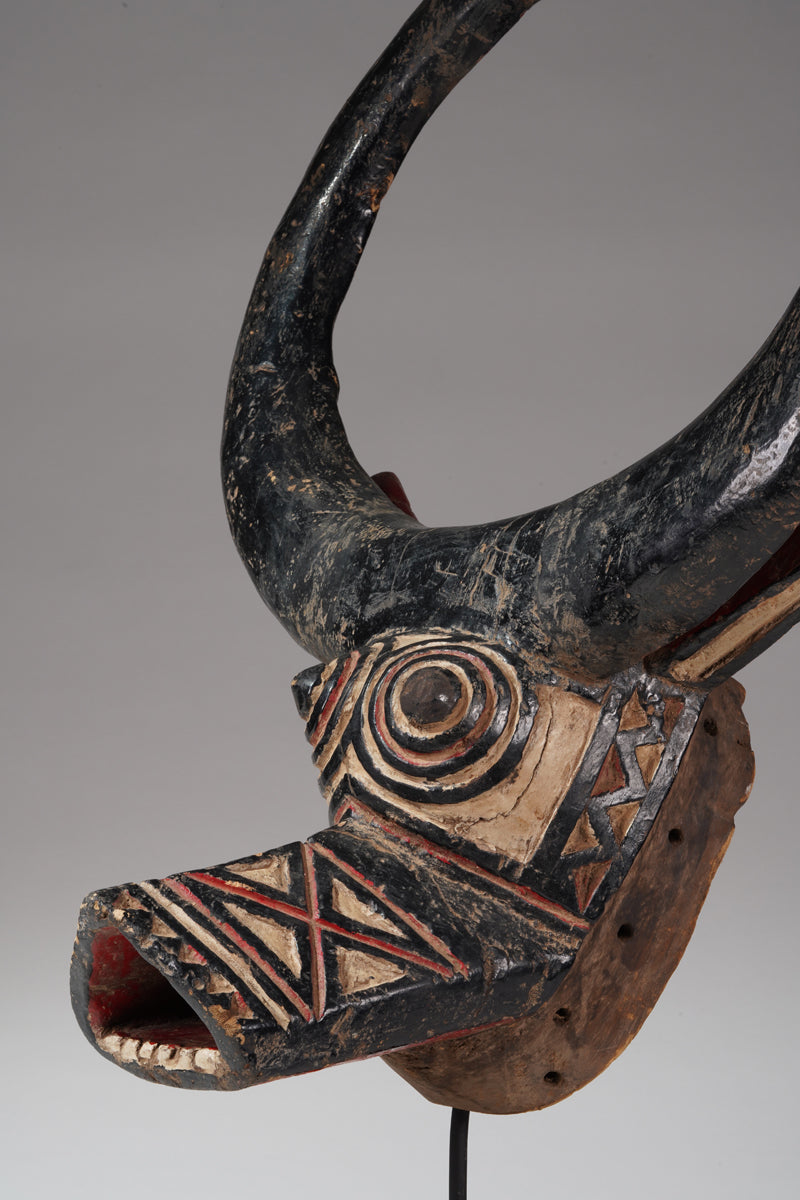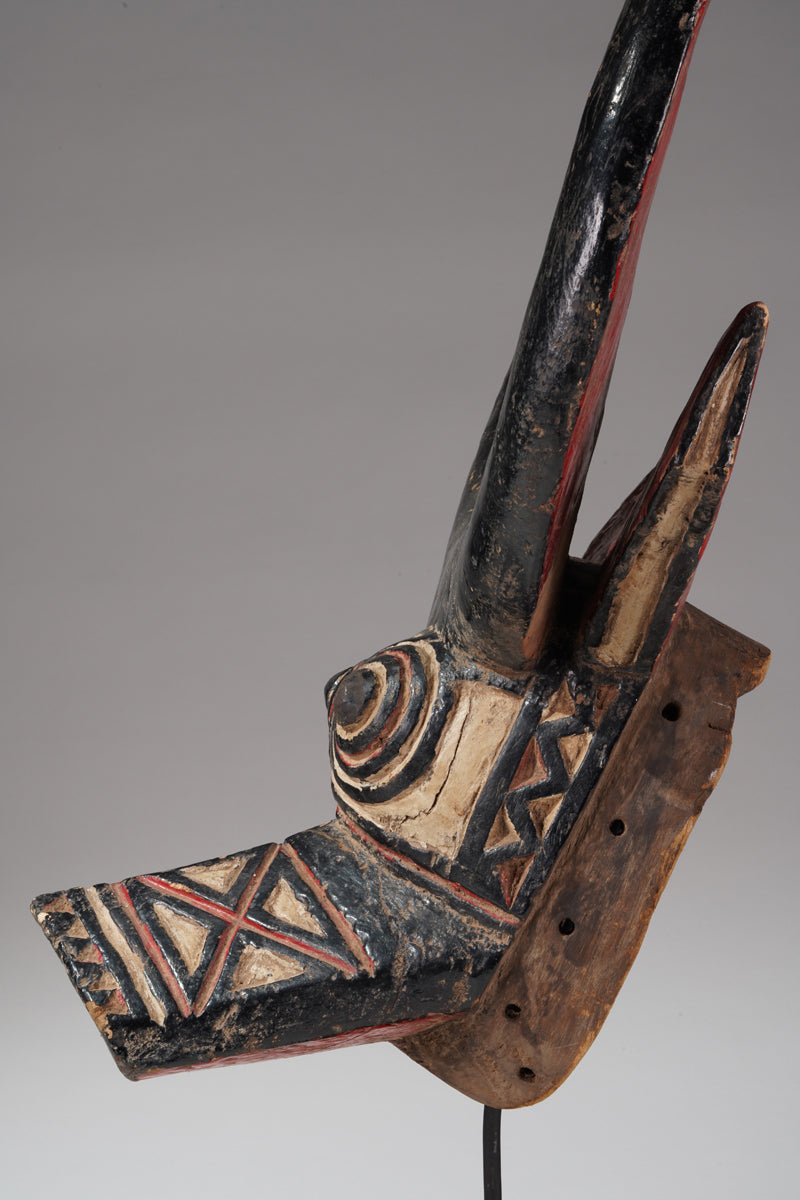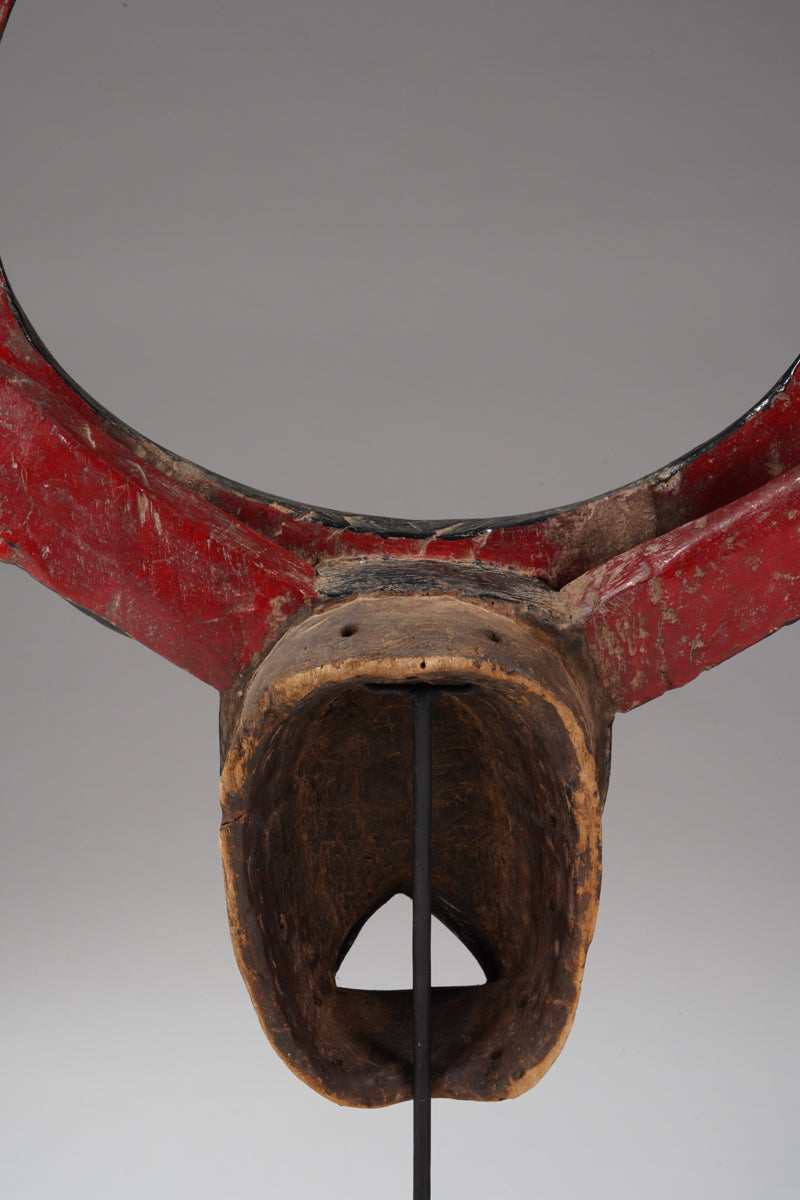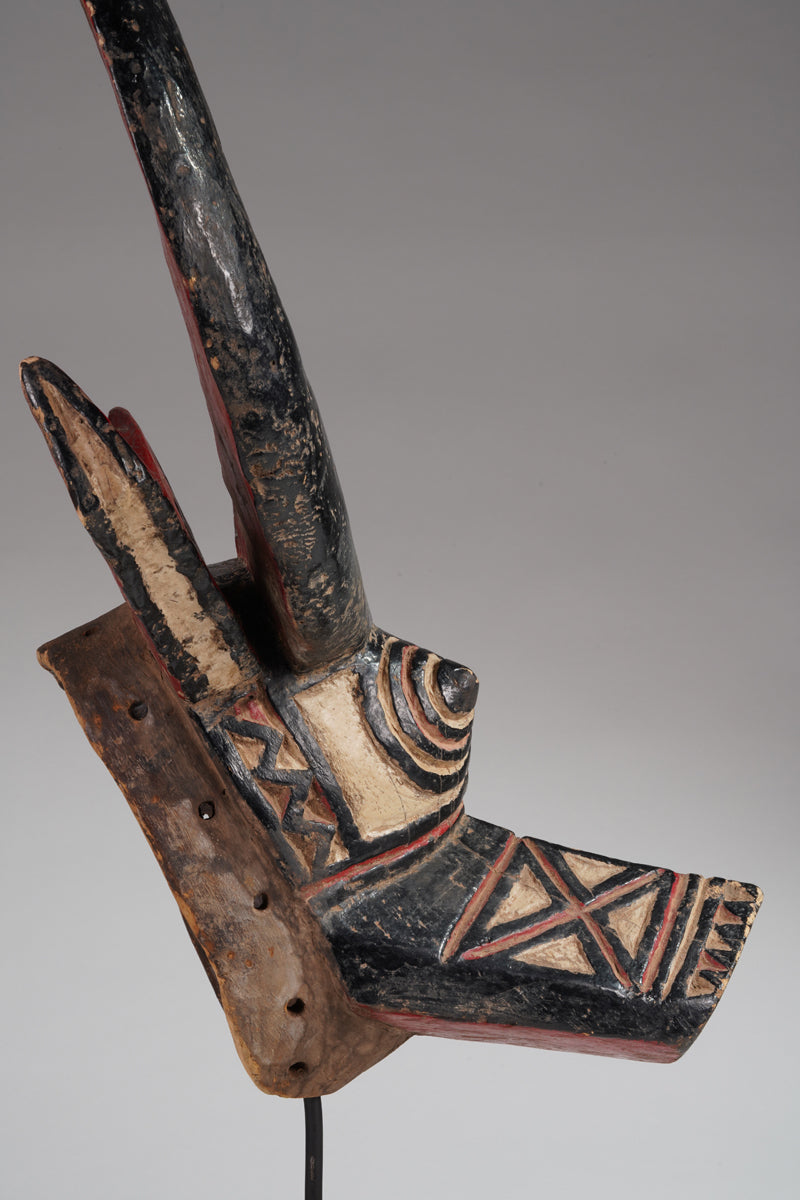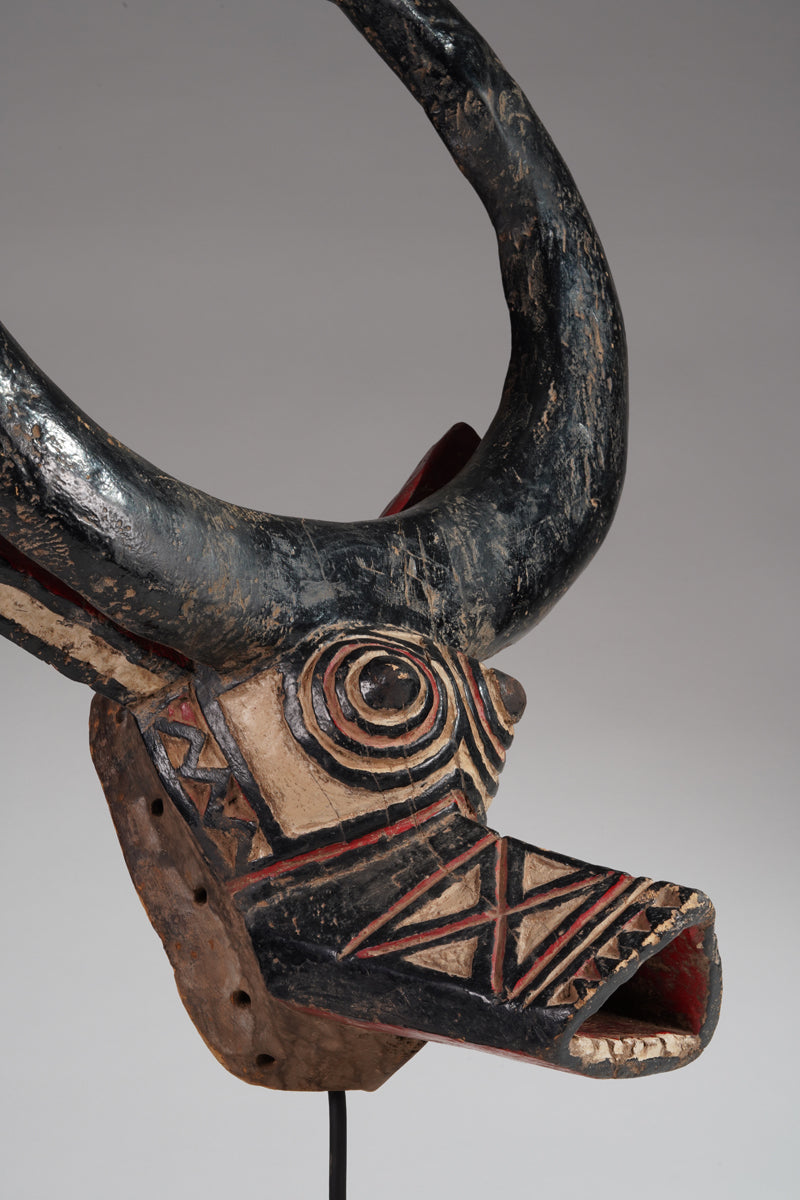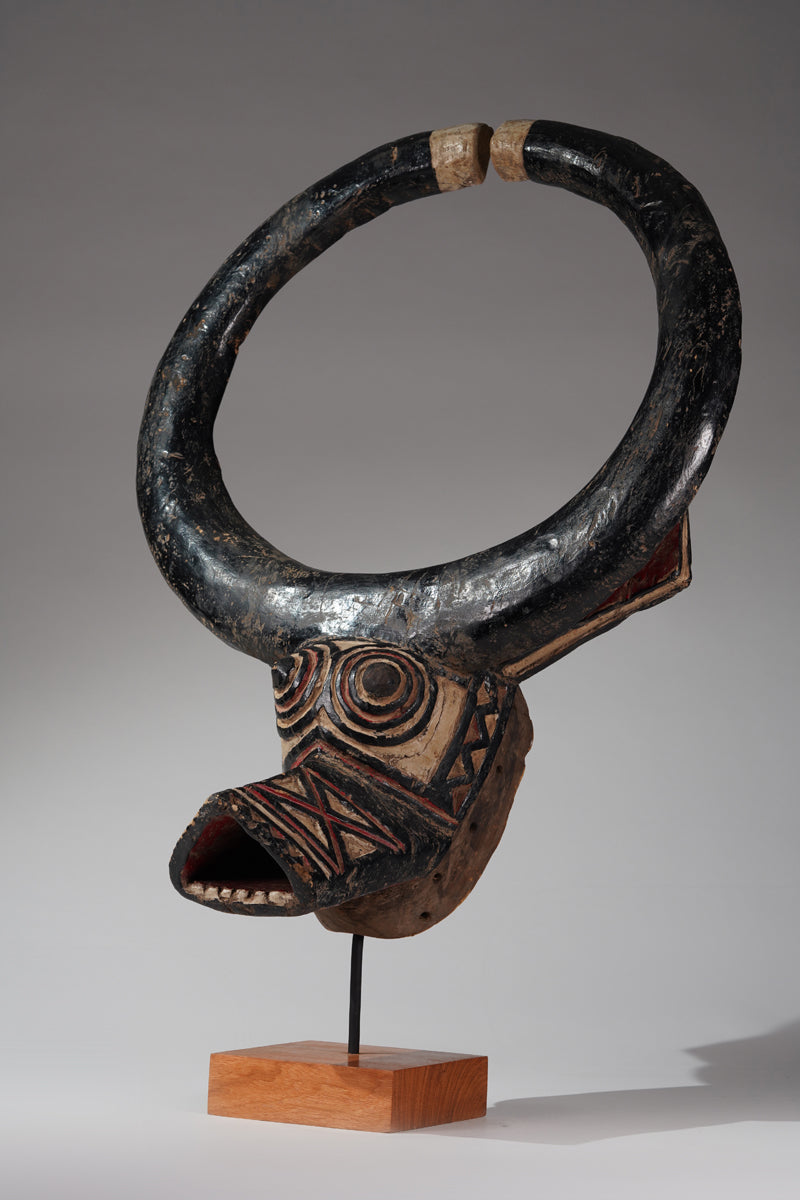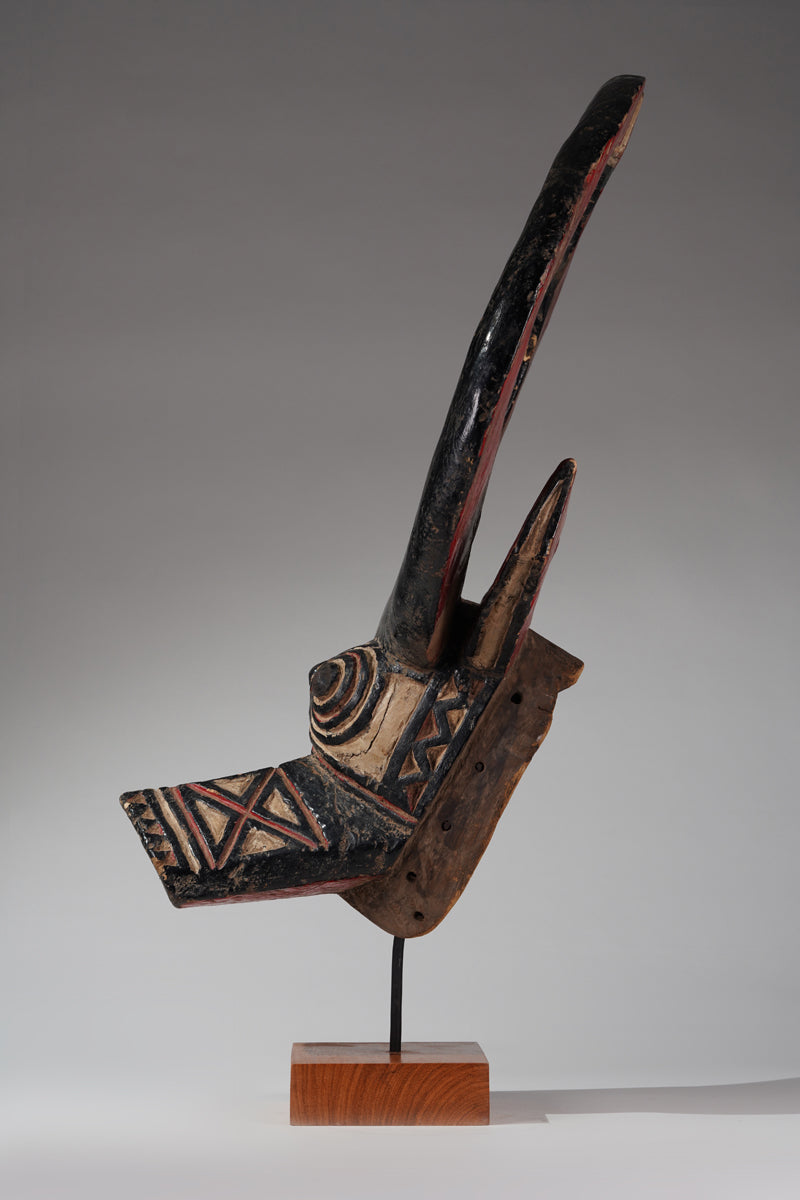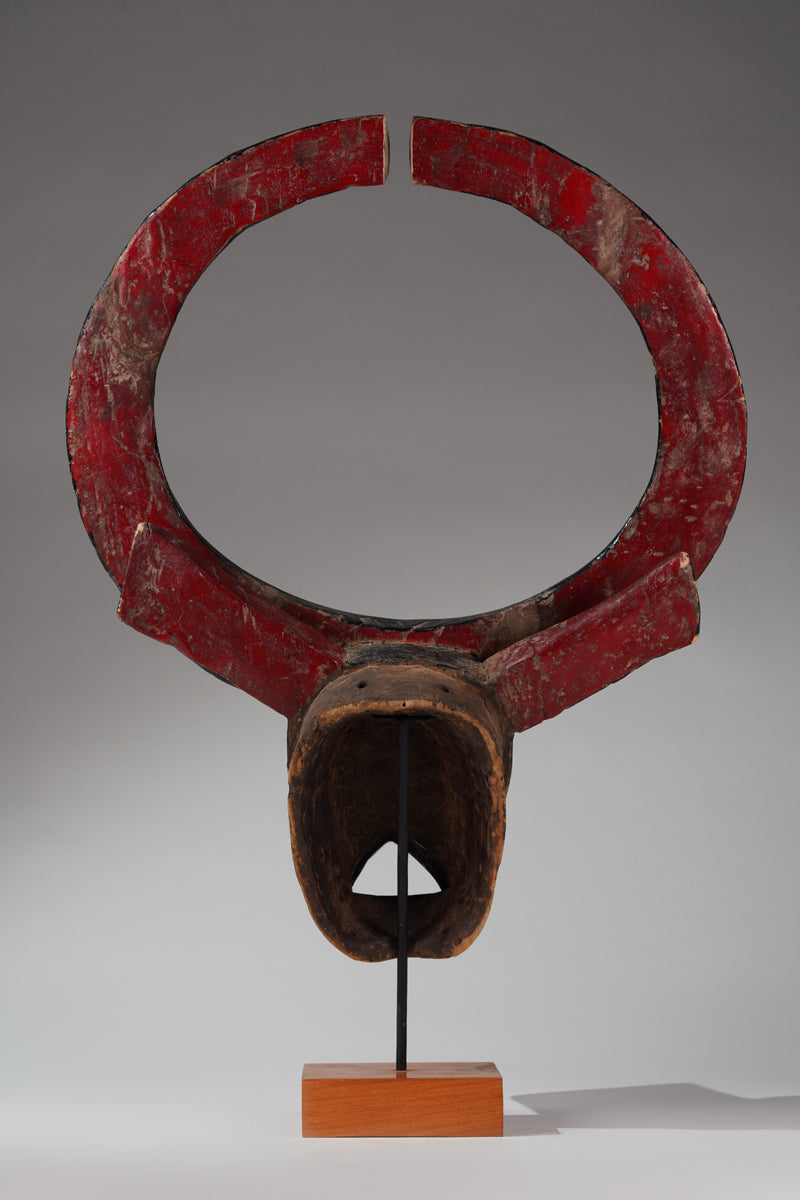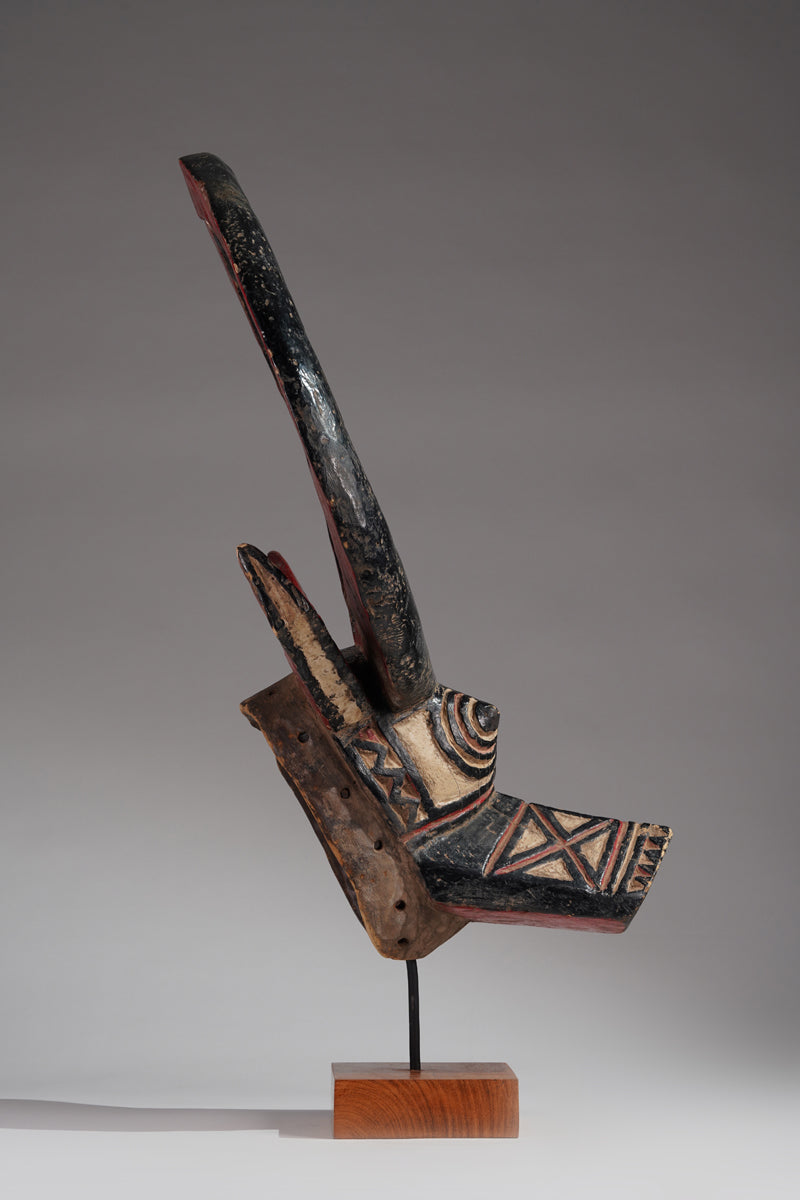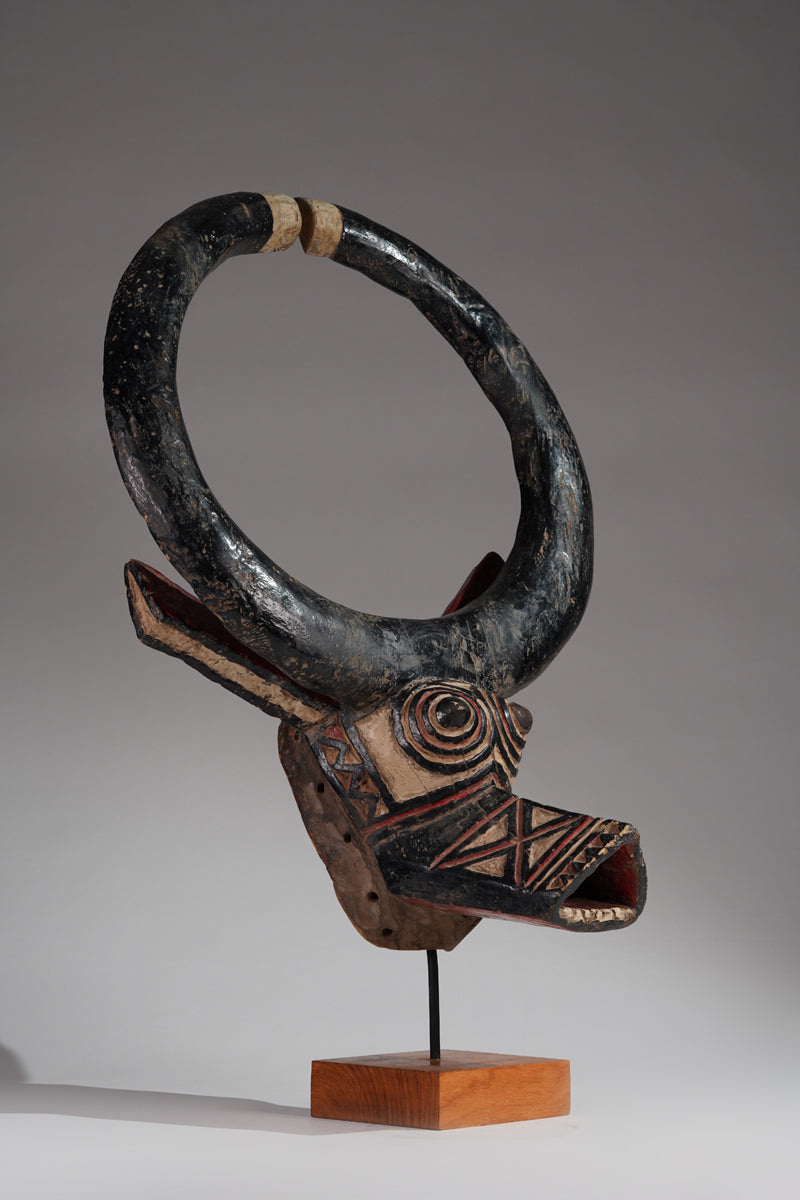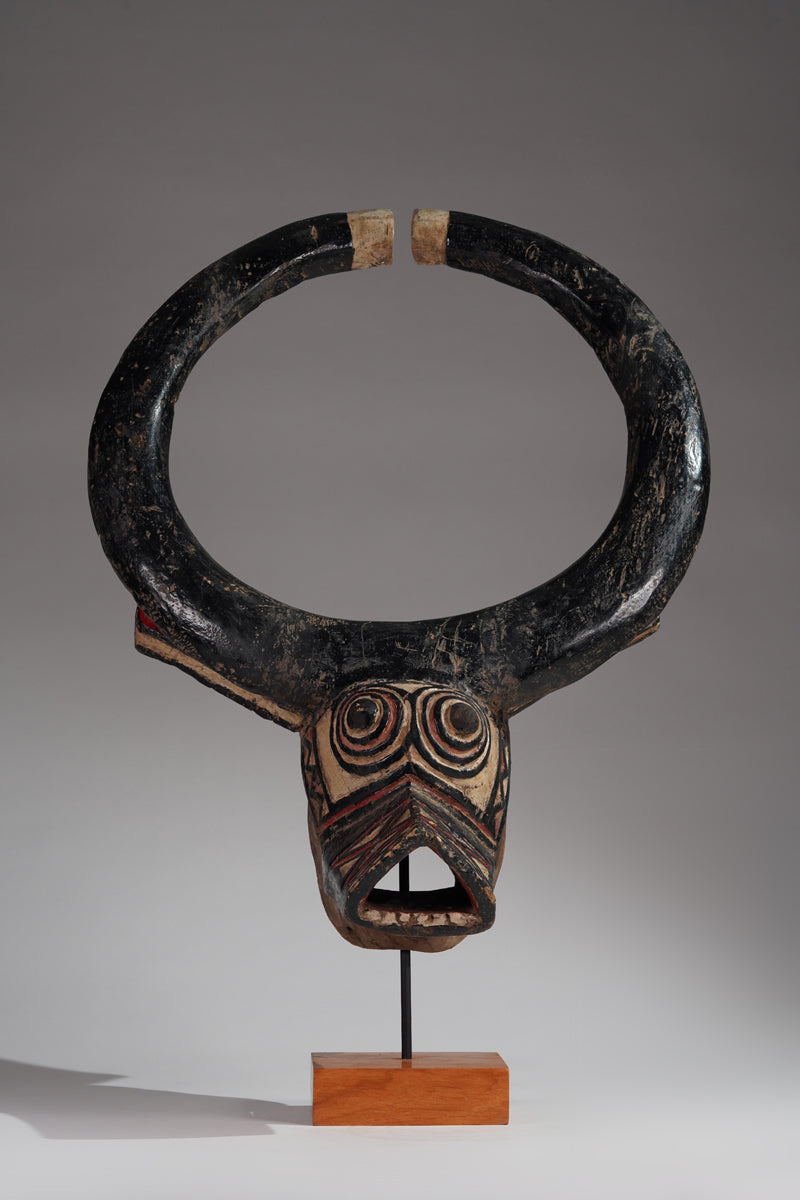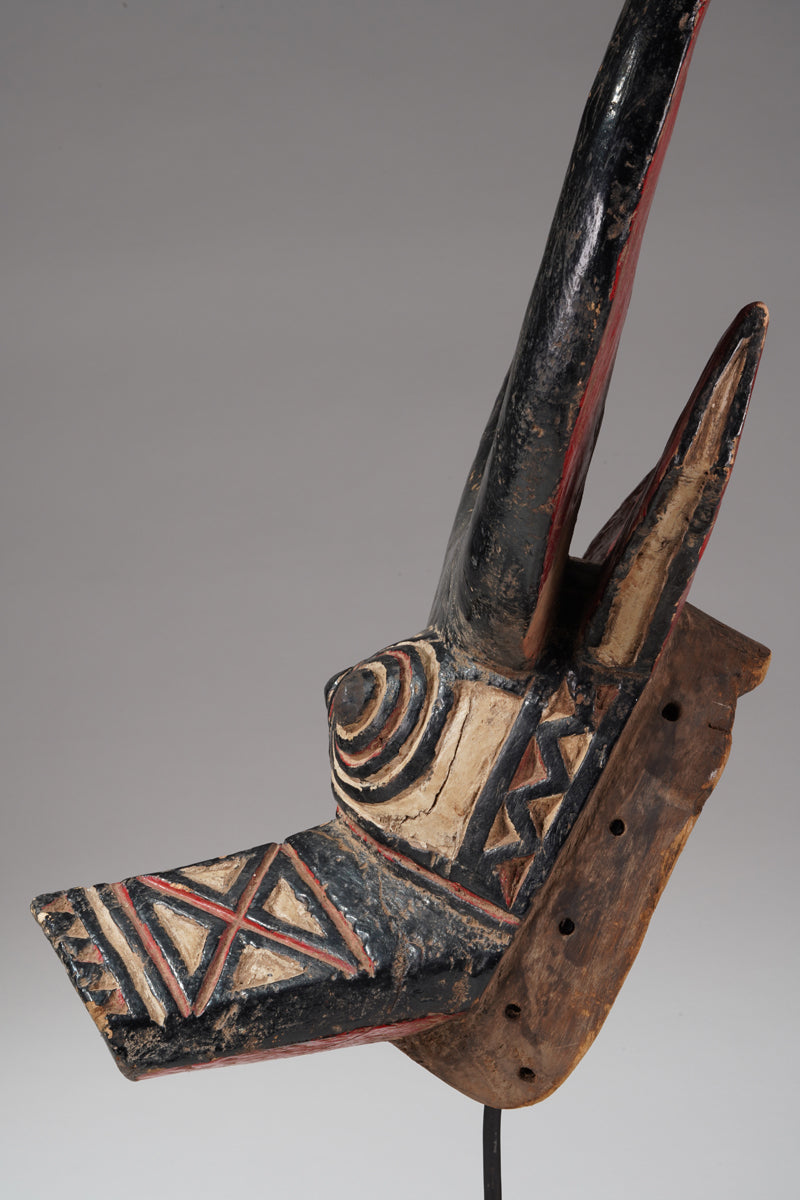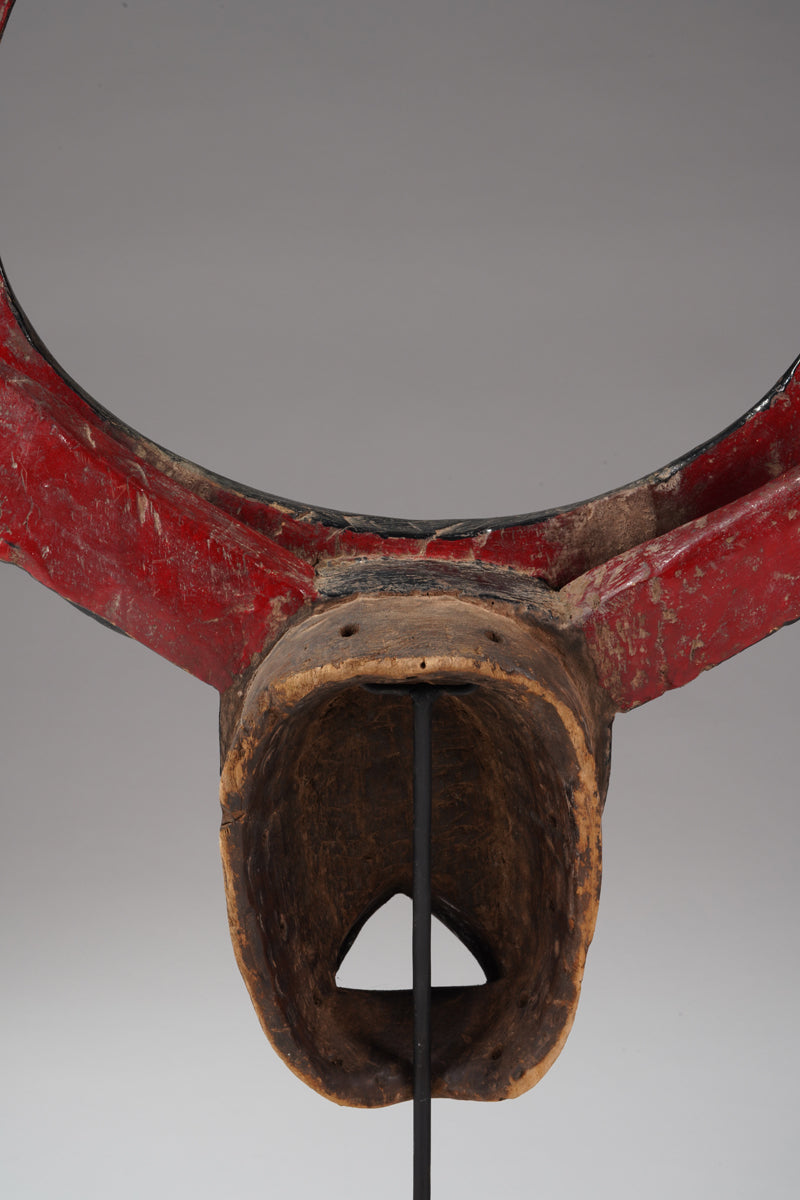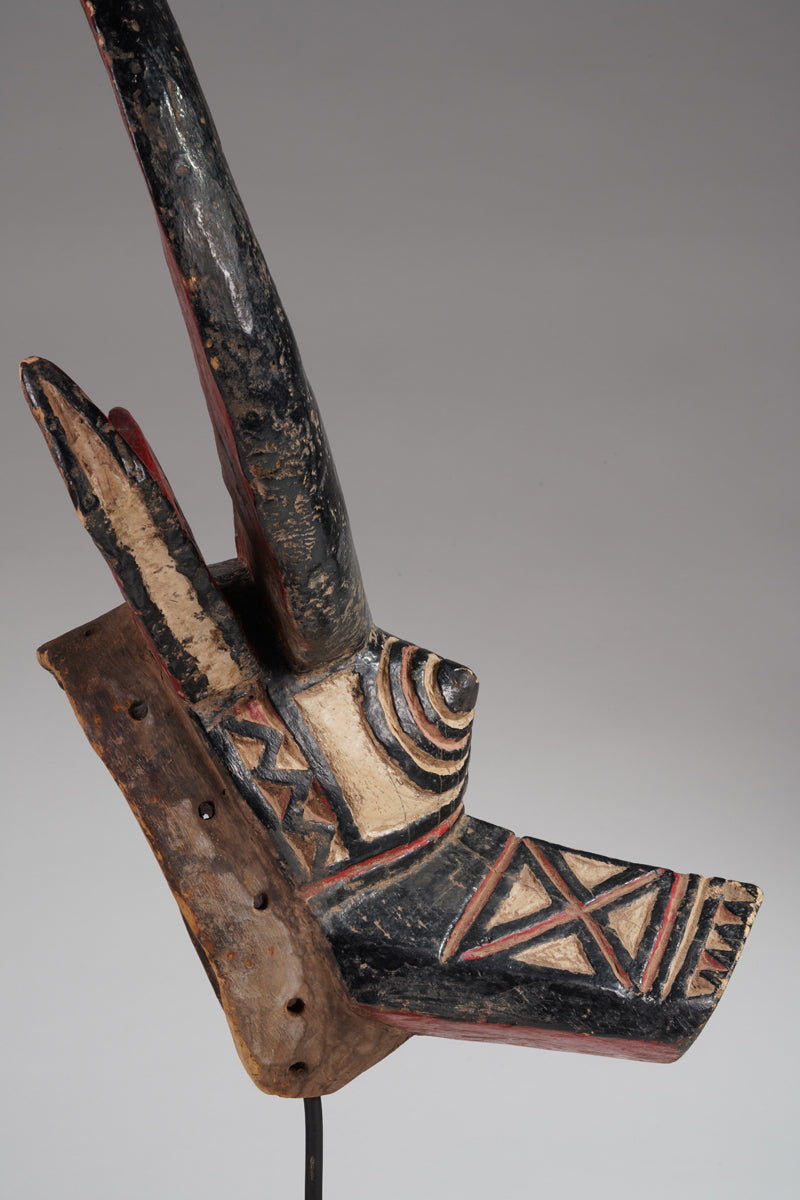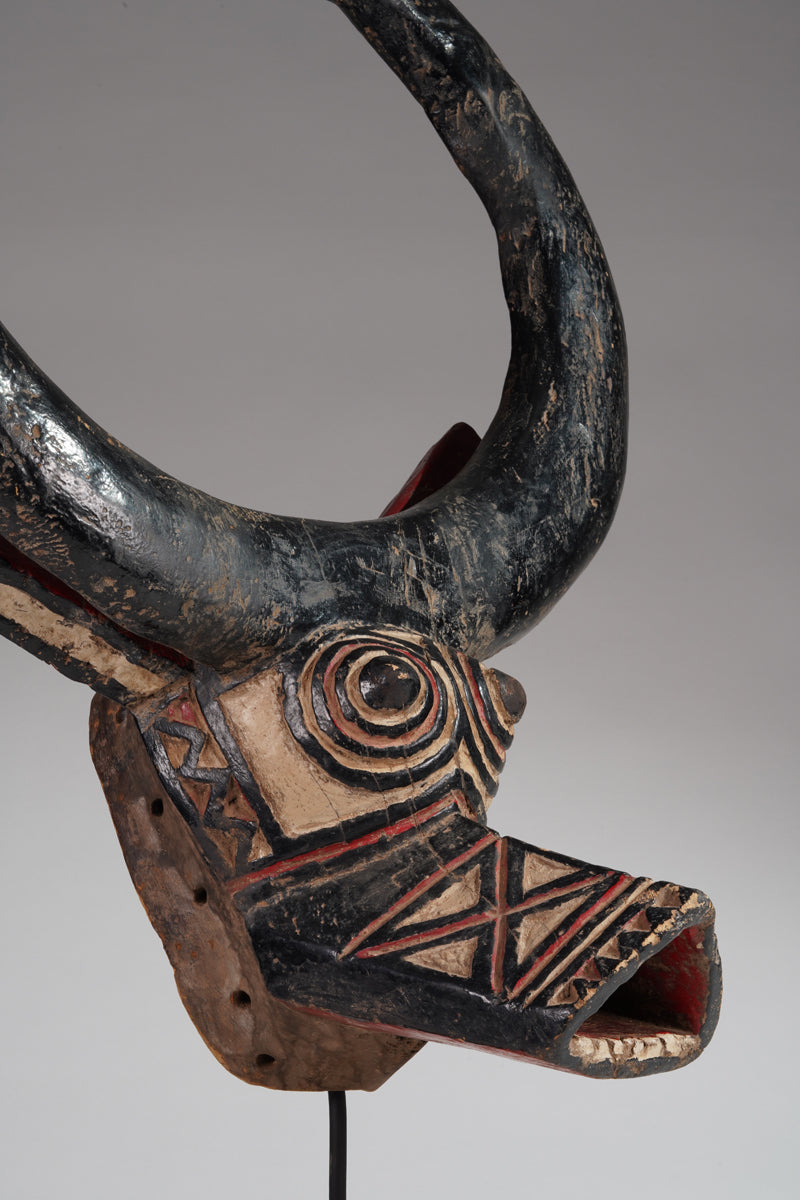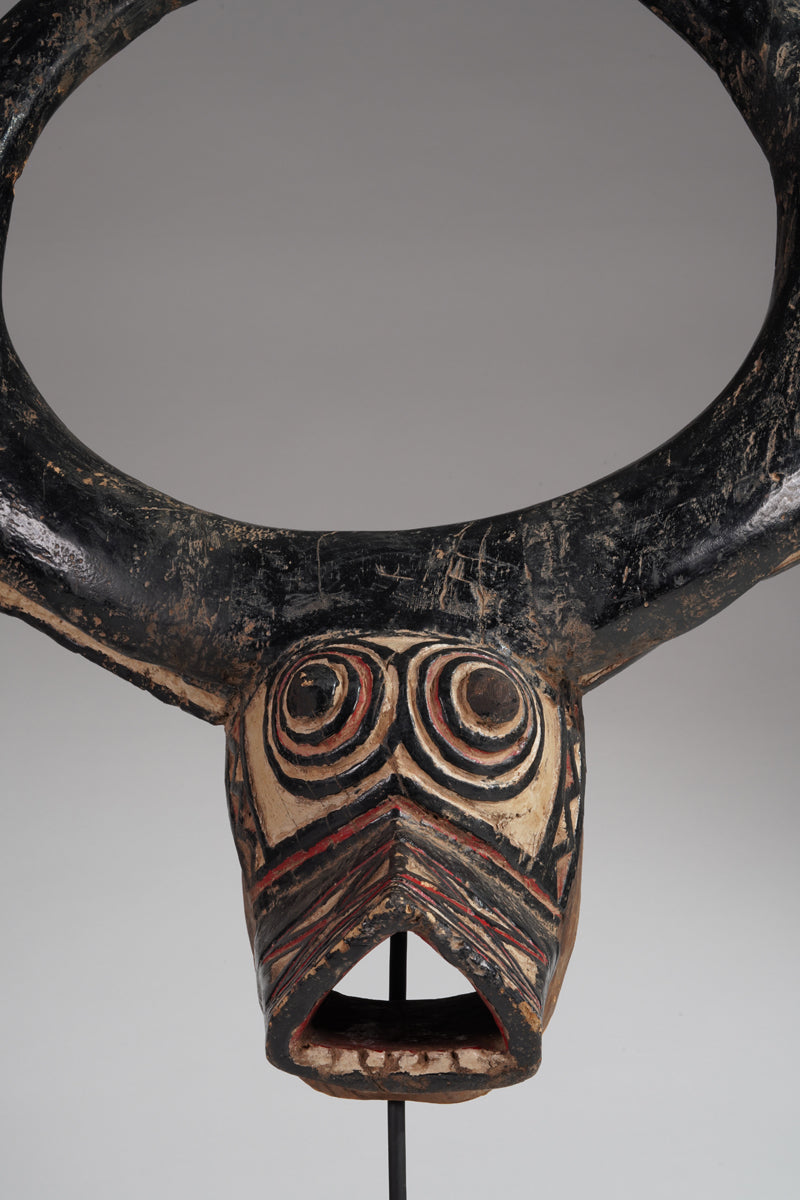wolfgang-jaenicke
A Gurunsi buffalo mask
A Gurunsi buffalo mask
Couldn't load pickup availability
A Gurunsi buffalo mask, Burkina Faso, Koudougou region. Without stand.
The Gurunsi buffalo mask, originating from the Koudougou region of Burkina Faso, represents a vital component of the ritual and artistic traditions of the Gurunsi peoples, an ethnolinguistic group known for their rich cultural heritage in West Africa. These masks are typically crafted from wood and painted with natural pigments, depicting stylized representations of buffaloes—a symbol of strength, fertility, and social prestige within Gurunsi cosmology. The buffalo mask plays a central role in initiation ceremonies, funerary rites, and agricultural festivals, where it functions both as a spiritual intermediary and a vehicle for communal identity. Its imposing form, often characterized by prominent curved horns and geometric patterns, is designed to evoke the power and vitality of the buffalo, an animal revered for its resilience and importance to local subsistence economies (Skinner, 2007). As Jean-Paul Colleyn notes, “the Gurunsi buffalo mask is not merely an artistic object; it embodies the intersection of social values, spiritual beliefs, and ecological realities, mediating between the human and natural worlds” (Colleyn, 1999, p. 112). The Koudougou region’s artisans maintain traditional carving techniques passed down through generations, ensuring the continuity of this culturally significant art form. The buffalo mask’s performance context involves masked dancers who enact mythological narratives, reinforcing communal cohesion and transmitting ancestral knowledge (Skinner, 2007). In sum, the Gurunsi buffalo mask from Koudougou exemplifies the inseparability of art, ritual, and social structure in West African indigenous cultures.
References:
Colleyn, J.-P. (1999). African Masks and Cultures: An Illustrated Encyclopedia. Thames & Hudson.
Skinner, E. P. (2007). Masks and Society: The Art and Ritual of the Gurunsi People. African Arts, 40(4), 22–35.
Height: 76 m without stand
Weight: 3 kg without stand
